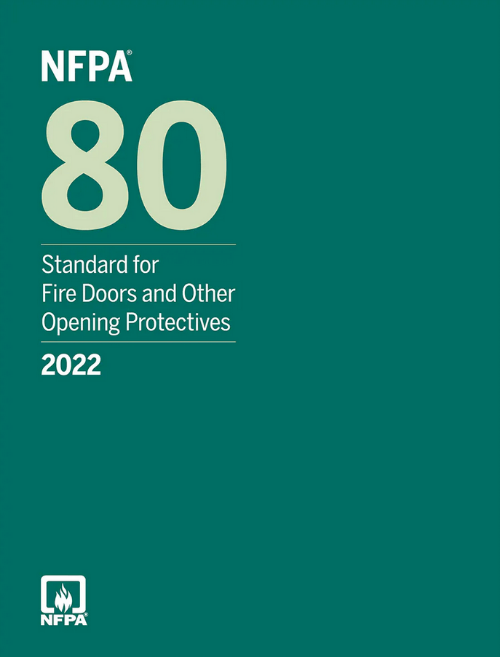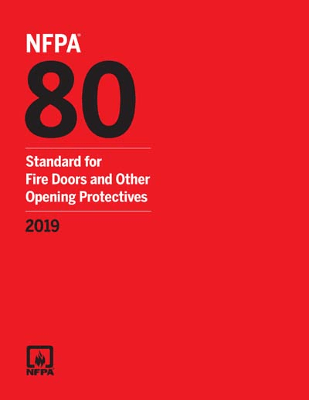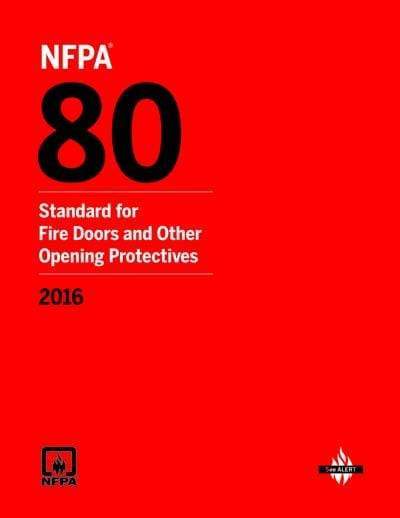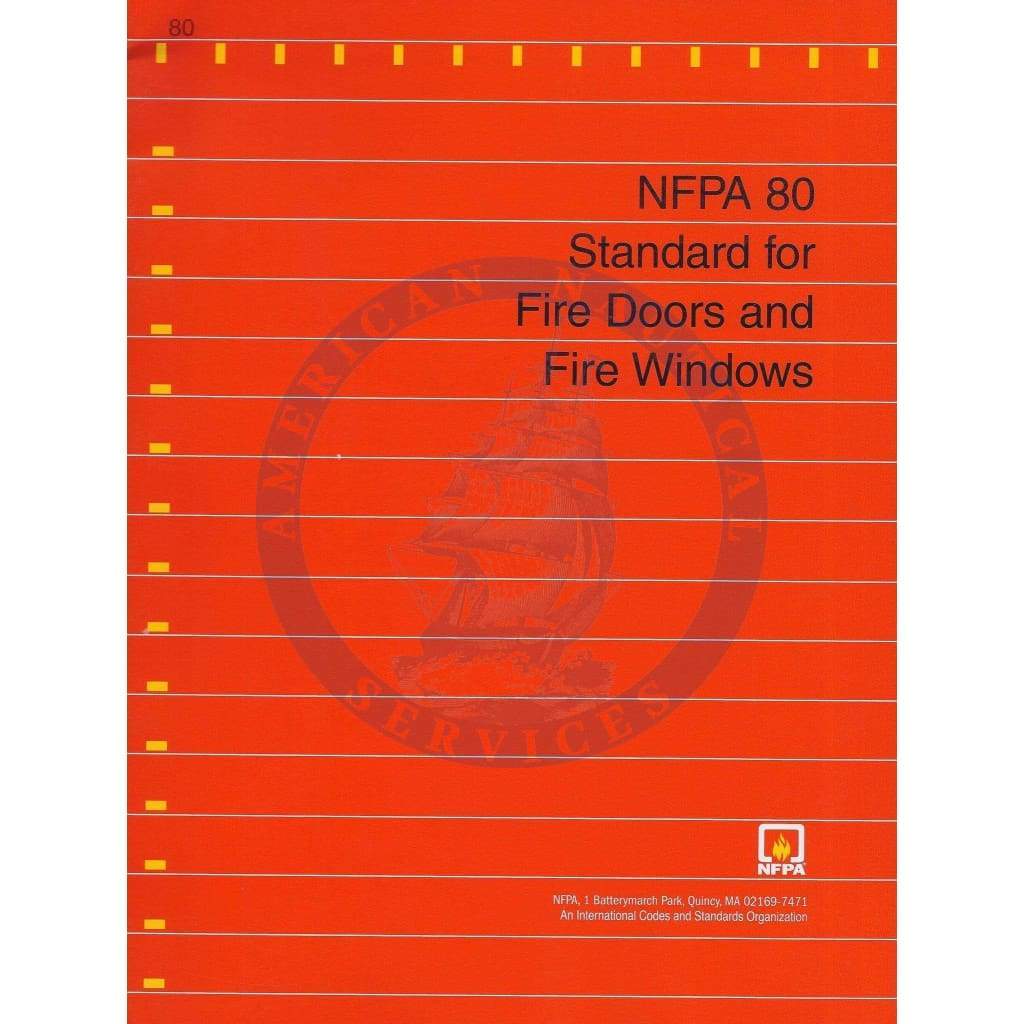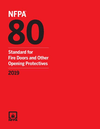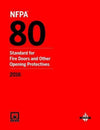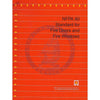Description
Protect openings in rated walls, floors, and ceilings against the spread of fire and smoke with NFPA 80.
Expanded, revised, and updated, the 2016 edition of NFPA 80: Standard for Fire Doors and Other Opening Protectives helps you ensure proper installation, inspection, testing, and maintenance of fire door assemblies, fire window assemblies, fire dampers, fabric fire safety curtains, and fire protective curtain assemblies.
Referenced by NFPA 101®: Life Safety Code®, model building codes, and fire codes, NFPA 80 is vital to the fire protection of openings.
Proper installation of openings in fire rated assemblies is critical to both occupant life safety and property protection -- and fire doors and fire windows are required to be inspected and tested annually to ensure they remain in proper working condition and can help confine a fire should it occur.
New in the 2016 edition:
- Expanded requirements for fire door labels help Authorities Having Jurisdiction (AHJs) and end users verify that the assembly or product is appropriate.
- New section for the required marking of fire rated glazing offers better usability by promoting standardized requirements.
- New chapter on fire protective curtain assemblies addresses new technology.
- Additional guidance for use of oversized fire doors reflects industry needs.
- Reorganized requirements for actuation devices for use with fire doors, fire shutters, and fire windows.
- A new allowance to use specific products on doors exceeding maximum clearance under the bottom of the door explicitly allows a new category of products, where listed for this use.
From fire doors and fire windows to fabric fire safety curtains and fire dampers, NFPA 80 covers it all.
Doors and other opening protectives that are not installed and maintained in accordance with NFPA 80 are at risk for compromising the fire barrier. That's why staying up-to-code is essential for everyone involved in building fire safety -- from manufacturers to designers, engineers, contractors, AHJs, fire door inspectors, and building owners. (Softbound, 93 pp., 2016)
Table of Contents
NFPA® 80 Standard for Fire Doors and Other Opening Protectives, 2016 Edition
Chapter 1 Administration
1.1 Scope.
1.2 Purpose.
1.3 Retroactivity.
1.4 Equivalency.
Chapter 2 Referenced Publications
2.1 General.
2.2 NFPA Publications.
2.3 Other Publications.
2.4 References for Extracts in Mandatory Sections.
Chapter 3 Definitions
3.1 General.
3.2 NFPA Official Definitions.
3.3 General Definitions.
Chapter 4 General Requirements
4.1 General Limitations.
4.2 Listed and Labeled Products.
4.3 Classifications and Types of Doors.
4.4 Glazing Material in Fire Doors.
4.5 Fire Resistance–Rated Glazing in Doors and Windows.
4.6 Classification of Hardware for Fire Doors.
4.7 Actuation Devices for Fire Doors, Fire Shutters, and Fire Windows.
4.8 Supporting Construction.
Chapter 5 Inspection, Testing, and Maintenance
5.1 General.
5.2 Inspection and Testing.
5.3 Retrofit Operators.
5.4 Performance-Based Option.
5.5 Maintenance.
Chapter 6 Swinging Doors with Builders Hardware
6.1 Doors.
6.2 Supporting Construction.
6.3 Openings.
6.4 Assembly Components.
6.5 Application, Installation, and Adjustment.
Chapter 7 Swinging Doors with Fire Door Hardware
7.1 Doors.
7.2 Supporting Construction.
7.3 Openings.
7.4 Assembly Components.
Chapter 8 Horizontally Sliding Doors
8.1 Doors.
8.2 Supporting Construction.
8.3 Openings. (Reserved)
8.4 Assembly Components.
Chapter 9 Special-Purpose Horizontally Sliding Accordion or Folding Doors
9.1 Doors.
9.2 Supporting Construction.
9.3 Clearances Around Openings.
9.4 Assembly Components.
Chapter 10 Vertically Sliding Fire Doors
10.1 Doors.
10.2 Supporting Construction.
10.3 Clearances.
10.4 Assembly Components.
Chapter 11 Rolling Steel Doors
11.1 Doors.
11.2 Supporting Construction.
11.3 Openings.
11.4 Assembly Components.
11.5 Weather Protection.
Chapter 12 Fire Shutters
12.1 Types.
12.2 Requirements.
12.3 Weather Protection.
Chapter 13 Service Counter Fire Doors
13.1 Doors.
13.2 Supporting Construction.
13.3 Counters.
13.4 Automatic Closing.
Chapter 14 Hoistway Doors for Elevators and Dumbwaiters
14.1 Doors.
14.2 Types of Doors.
14.3 Hoistway Door Vision Panels.
14.4 Door Operation.
Chapter 15 Chute Doors
15.1 Chute Discharge Doors.
15.2 Chute Intake Doors.
15.3 Limited-Access Gravity Chutes.
15.4 Pneumatic Chute Intake Doors.
Chapter 16 Access Doors
16.1 Doors.
16.2 Types of Doors.
Chapter 17 Fire Windows
17.1 Windows.
17.2 Glazing Material.
17.3 Types of Windows.
17.4 Installation.
17.5 Closing Devices.
Chapter 18 Glass Block Assemblies
18.1 General.
18.2 Installation.
Chapter 19 Installation, Testing, and Maintenance of Fire Dampers
19.1 General.
19.2 Installation.
19.3 Operational Test.
19.4 Acceptance Testing.
19.5 Periodic Testing.
19.6 Maintenance.
Chapter 20 Fabric Fire Safety Curtains
20.1 General.
20.2 Fabric Fire Safety Curtain Components.
20.3 Installation.
20.4 Fire Safety Curtain Assemblies.
20.5 Supporting Construction.
20.6 Rigging and Lifting Equipment.
20.7 Operation of the Fire Safety Curtain Assembly.
20.8 Acceptance Testing.
20.9 Care and Maintenance.
Chapter 21 Fire Protective Curtain Assemblies
21.1 General.
21.2 Mounting of Fire Protective Curtain Assemblies.
21.3 Assembly Components.
21.4 Power Operators.
21.5 Installation.
21.6 Inspection, Testing, and Maintenance.
21.7 Acceptance Testing.
21.8 Closing Devices.
21.9 Periodic Inspection and Testing.
21.10 Maintenance.
Annex A Explanatory Material
Annex B Fire Doors: Protection of Conveyor Openings
Annex C Illustration of Types of Fire Window Components
Annex D Fire Door and Fire Window Classifications
Annex E Surface Attachments to Swinging Door Faces
Annex F Door Hardware Locations
Annex G Types of Door Construction
Annex H Special Purpose Doors
Annex I Radiant Heat Transfer
Annex J Performance-Based Option for the Inspection, Testing, and Maintenance of Fire Door Assemblies
Annex K General Information About Fire Doors
Annex L Informational References
